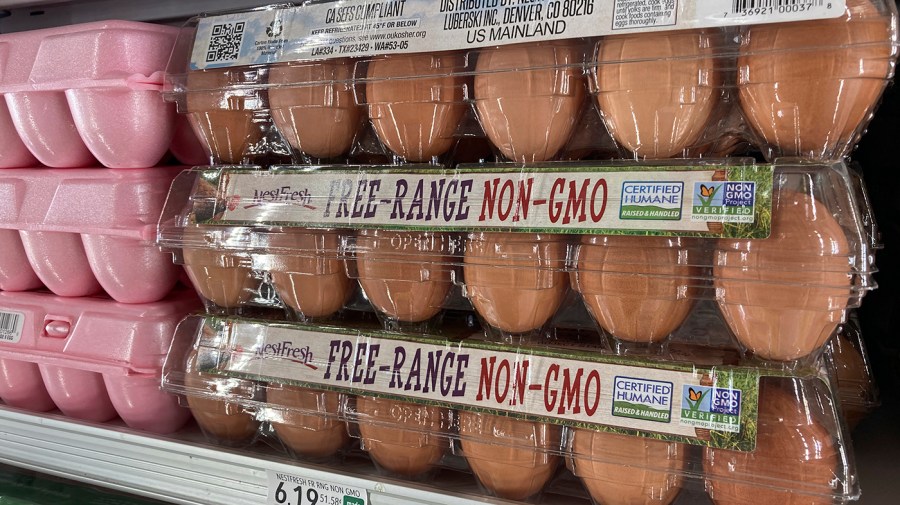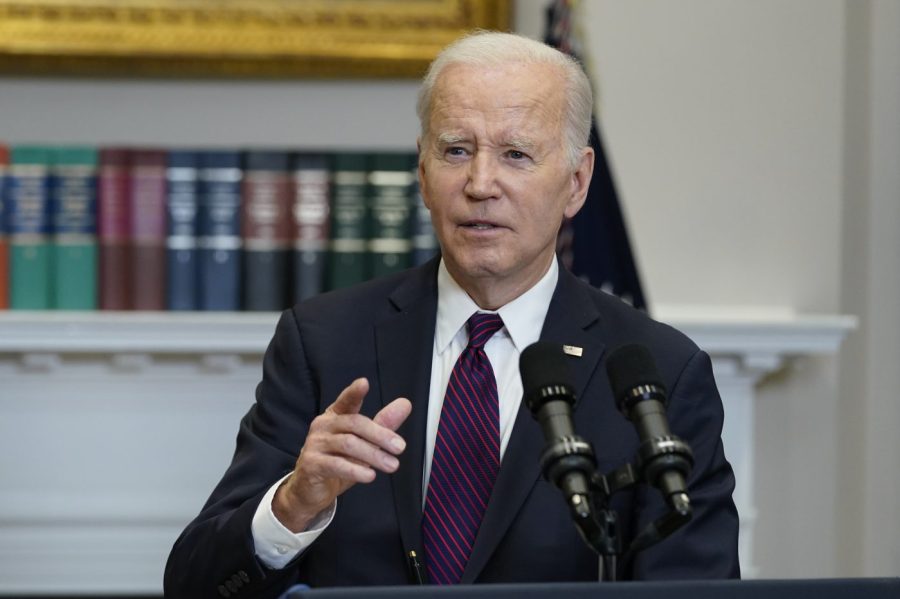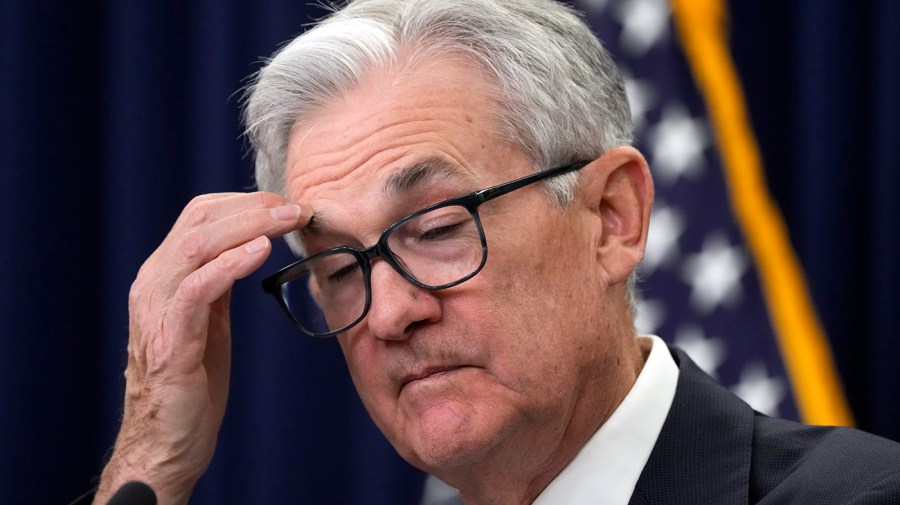Three key takeaways from the April inflation report
Inflation in the U.S. continues to wane, bolstering hopes that the country is on track to restore price stability after years of painful price hikes.
Prices rose 4.9 percent annually in April, the slowest annual rate in two years, according to the Labor Department’s Consumer Price Index (CPI) released Wednesday. Annual inflation has now fallen for 10 straight months since its peak at 9 percent in June 2022.
By the numbers: Inflation slowed in April to lowest rate since 2021
The inflation index rose 0.4 percent on a month-to-month basis, right in line with analysts’ expectations. Key categories such as groceries and transportation services saw meaningful price declines.
Inflation’s trajectory — and the strength of the broader U.S. economy — will loom large over the 2024 election; voters continue to give President Biden poor marks on his handling of the economy, despite historically low unemployment.
Report shows relief is coming for consumers

For two straight months, grocery prices have actually decreased slightly, falling 0.2 percent in April.
The price of milk dropped 2 percent, oranges fell 3.8 percent and hot dogs fell 2.9 percent in April. Ham was up 2 percent on the month, while lettuce prices increased 3.5 percent.
That’s a welcome relief for Americans who have increasingly suffered from food insecurity due to rising costs, according to a March survey from Urban Institute.
Still, grocery prices remain 7.1 percent higher than they were last year. Until recently, food inflation remained sticky thanks to a combination of supply disruptions and persistent price hikes by top brands.
Mondelez, the company behind Ritz, Oreo and other brands, recently reported a 143-percent year-over-year increase in first-quarter profits. Like other major food companies enjoying huge earnings, the snack maker credited its wave of price hikes.
“To our delight, the consumer has not reacted by buying less product. They keep on buying the same or more product. But as we get through those price increases, growth will come down,” Mondelez CEO Dirk Van de Put said on an earnings call.
Companies in an array of industries have been charging more because consumers are willing to pay. But sales are slowing as consumers grapple with sky-high prices and weaker wage growth, prompting many companies to hold off on additional markups.
New car prices decreased 0.2 percent in April after record-breaking prices forced many Americans out of the market, which may have contributed to a big surprise in Wednesday’s report: Used car prices surged 4.4 percent on the month.
“This is temporary in our view. We still expect a period of a few years of durables deflation in response to healing supply chains,” Morningstar Research chief U.S. economist Preston Caldwell said in a memo.
Excluding food and energy prices that are prone to large swings, “core” inflation rose 0.4 percent on the month and 5.5 percent annually, changing little from previous months.
That was driven by a 0.4-percent monthly increase in housing, which makes up the bulk of the CPI; rents rose 0.5 percent and are up 8.2 percent annually. Economists expect rents to fade in the second half of the year.
“Rent growth will decrease because apartment construction — entry units coming on the market — is already in the pipeline,” National Association of Realtors chief economist Lawrence Yun said Wednesday.
Biden needs inflation to cool faster

From here, the Federal Reserve Bank of Cleveland forecasts annual inflation to fall to 4.4 percent in May. Economists broadly predict the inflation rate will fall to around 3 percent by 2024.
That may not be fast enough for President Biden, whose reelection campaign is struggling to overcome voter concerns about inflation and the economy.
A Gallup poll released Tuesday found that just 35 percent of Americans have confidence in Biden’s ability to do the right thing for the economy, narrowly ahead of George W. Bush’s 34-percent rating around the time of the 2008 financial crisis. Nearly half of respondents said their confidence in Biden’s handling of the economy is “almost none.”
While inflation is cooling, prices remain 13.6 percent higher than they were two years ago. Wages have risen, but hourly earnings are down 0.5 percent annually when adjusted for inflation, according to Labor Department data released Wednesday.
Biden has touted huge job growth under his tenure and a historically low 3.4-percent unemployment rate. But the path forward is unpredictable.
Economists are increasingly forecasting a recession later this year, brought on by the Federal Reserve’s interest rate hikes and high-profile bank failures that will slow down lending.
The U.S. also faces the risk of a default on its national debt as soon as next month; Biden and Speaker Kevin McCarthy (R-Calif.) don’t appear close to reaching a deal to raise the debt limit.
“Everyone in the meeting understood the risk of default,” Biden said Tuesday following a meeting with congressional leaders.
“Our economy would fall into a significant recession. It would devastate retirement accounts, increase borrowing costs. According to Moody’s, nearly 8 million Americans would lose their jobs.”
Fed has decisions to make

Forecasters believe the Fed will pause interest rate hikes at its next meeting. But experts said that Fed officials won’t be pleased that core inflation isn’t falling.
“Another rate hike in June is still a live option, given the elevated rate of inflation and a core reading of 5.5% that is simply unacceptable,” reads a memo from Joe Brusuelas, chief economist at the consulting firm RSM.
Federal Reserve Chairman Jerome Powell has insisted that the central bank will keep interest rates elevated until inflation returns to the Fed’s annual 2-percent goal, even if its restrictive policy causes economic damage.
There’s deep concern in the financial sector about the impact of future hikes, given that banks are sitting on hundreds of billions of dollars in unrealized losses caused by higher rates.
Projections from Fed officials show the unemployment rate reaching 4.5 percent by the end of 2023, representing millions of job losses due to rate hikes. Powell has acknowledged that Black and Hispanic workers would be impacted the most, prompting concern from progressive groups and some prominent Democrats.
“The verdict is in: we don’t have to choose between low prices and low unemployment. We can have both,” Lindsay Owens, executive director of the Groundwork Collaborative, said in a statement on Wednesday’s inflation report.
And only 36 percent of Americans are confident Powell is doing the right thing for the economy, according to a Gallup survey released Tuesday, down from 43 percent in 2022. It’s the lowest figure on record for a Fed chair since the pollster started tracking Americans’ views in 2001.
Copyright 2024 Nexstar Media Inc. All rights reserved. This material may not be published, broadcast, rewritten, or redistributed..













